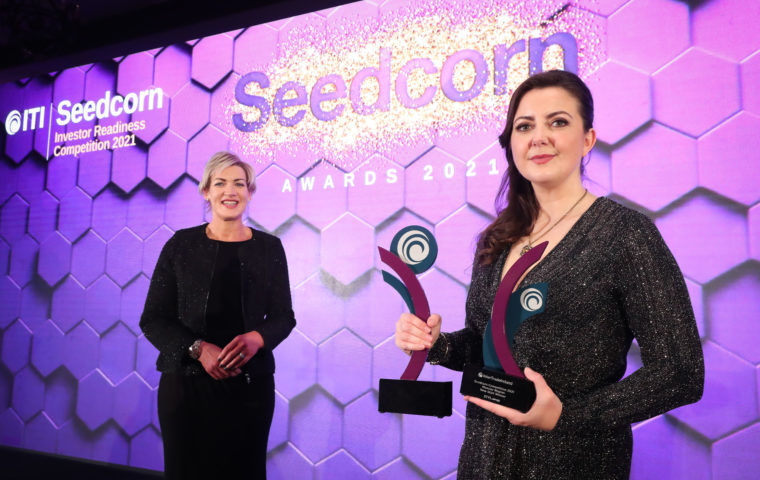-
 innovation thrive 202419 Jul 2024Q&A with Dr Lawrence Dooley, on the benefits of the Thrive – SME Innovation Programme
innovation thrive 202419 Jul 2024Q&A with Dr Lawrence Dooley, on the benefits of the Thrive – SME Innovation ProgrammeDr Lawrence Dooley Senior Lecturer in Enterprise and Innovation at University College Cork. Dr Lawrence Dooley answers some critical questions and discusses the opportunities companies can avail of by participating in the Thrive - SME Innovation programme.
-
 202323 Jan 2023Navigating your business in 2023: four things to know
202323 Jan 2023Navigating your business in 2023: four things to knowWith a great deal of uncertainty in the wider economy, here are four things for your business to keep in mind to have a solid strategy in place for 2023 and beyond.
-
 20229 Sept 2022Benefits of Digitalisation for SMEs
20229 Sept 2022Benefits of Digitalisation for SMEsIn today’s dynamic business environment there is no doubt that the demand for SMEs to adopt digital technologies is ever-increasing. Pressure from competitors, suppliers, and indeed customers exist, all demanding changes in how SMEs deliver their goods and services. So where does such a journey begin for companies in Ireland and Northern Ireland and is it worth it?
-
 tender-successfully tendering-events go-2-tender-workshops public-procurement tendering-hints-and-tips 202210 Jun 2022What’s new in Public Procurement and how will it affect SMEs
tender-successfully tendering-events go-2-tender-workshops public-procurement tendering-hints-and-tips 202210 Jun 2022What’s new in Public Procurement and how will it affect SMEsThe all-island public procurement market is undergoing some important changes, companies who are considering bidding for public sector contracts will need to be aware of these changes in order to stay competitive.
-
 202211 May 2022What makes a good management team?
202211 May 2022What makes a good management team?In this month's blog, Connor Sweeney, InterTradeIreland’s Seedcorn Programme Manager, discusses why having a sound management team in place is essential for your start-up to succeed.
-
 funding equity-advisory-clinics help-to-raise-finance seedcorn succeed-in-raising-finance 202212 Apr 2022Start-up Financing - Implications of the Pricing/Product/Service mix
funding equity-advisory-clinics help-to-raise-finance seedcorn succeed-in-raising-finance 202212 Apr 2022Start-up Financing - Implications of the Pricing/Product/Service mixInterTradeIreland’s Lead Equity Advisor, Drew O’Sullivan shares some valuable insights into why decisions on pricing, margins and cash flow generative models need to be carefully considered before seeking investment.
-
 uncategorised 20228 Mar 2022International Women's Day 2022 - Q&A with Shana Chu, CEO of Tailr
uncategorised 20228 Mar 2022International Women's Day 2022 - Q&A with Shana Chu, CEO of TailrTo celebrate International Women's Day 2022 we spoke to Shana Chu, CEO of Tailr about her company, the InterTradeIreland Seedcorn process and advice for aspiring female entrepreneurs.
-
 funding 20223 Mar 2022When fundraising, what do you want an investor to remember from your pitch?
funding 20223 Mar 2022When fundraising, what do you want an investor to remember from your pitch?Gaining investment isn’t always easy, it can be a long and competitive process, but one that is worth the wait.
-
 innovation 202211 Feb 2022How innovation and collaborative partnerships can mean success for your business in 2022
innovation 202211 Feb 2022How innovation and collaborative partnerships can mean success for your business in 2022Effective collaboration offers the facilitation and transfer of crucial skills, knowledge, expertise and supports growth capability.
-
 funding 202217 Jan 2022How to increase your chances of funding in 2022
funding 202217 Jan 2022How to increase your chances of funding in 2022What are your business goals in 2022? If raising funds is high on your list, then there are a couple of things you can do to increase your chances.
-
 all-island-innovation-programme 20219 Dec 2021Leveraging business model innovation
all-island-innovation-programme 20219 Dec 2021Leveraging business model innovationBusiness Model Innovation is a misunderstood term but one with huge potential. To achieve business model innovation you must first understand what a business model is. Put simply, a Business Model is a blueprint of how a company creates and captures value.
-
 uncategorised 20212 Dec 2021As the New Year dawns, here’s how businesses can get a head start in 2022
uncategorised 20212 Dec 2021As the New Year dawns, here’s how businesses can get a head start in 20222022 will bring both challenges and opportunities and in order to succeed, firms should arm themselves with knowledge of upcoming ‘key trends’.
-
 innovation seedcorn venture-capital synergy 20213 Nov 2021The necessity of networking and collaboration in today’s world
innovation seedcorn venture-capital synergy 20213 Nov 2021The necessity of networking and collaboration in today’s worldThe need for networking has probably never been greater but after over a year of limited contact, people may find it more difficult than ever before.
-
 e-merge 20214 Oct 20215 tips to optimise your website for eCommerce success
e-merge 20214 Oct 20215 tips to optimise your website for eCommerce successHere are five fundamental tips that you can use to optimise your eCommerce store for success.
-
 tender-successfully 202115 Sept 2021SMEs are tendering and winning more contracts in the public sector than ever before – here’s how to join them
tender-successfully 202115 Sept 2021SMEs are tendering and winning more contracts in the public sector than ever before – here’s how to join themOpportunity for public procurement on the island of Ireland is currently valued in excess of £11bn/€13bn per annum, with £7.6bn/€9bn in Ireland, and approximately £3.5bn/€4bn in Northern Ireland.
-
 innovation career-boost 202117 Aug 2021Here’s why hiring a new Project Manager is a serious investment in your innovation
innovation career-boost 202117 Aug 2021Here’s why hiring a new Project Manager is a serious investment in your innovationWhen exploring innovation, don’t just think in terms of products and services, think about people.
-
 acumen elevate sales-growth-on-your-doorstep 20219 Jul 2021Cross-border trade is vital to economic recovery. It should be part of your business growth strategy too
acumen elevate sales-growth-on-your-doorstep 20219 Jul 2021Cross-border trade is vital to economic recovery. It should be part of your business growth strategy tooCross-border trade is a significant slice of the economy – if you need any persuasion the numbers speak for themselves.
-
 all-island-innovation-programme 202110 Jun 2021Professor Alan Ahearne - Opportunities for SMEs that are ready to adapt
all-island-innovation-programme 202110 Jun 2021Professor Alan Ahearne - Opportunities for SMEs that are ready to adaptProfessor Alan Ahearne, Director of the Whitaker Institute at NUIG, advises on the opportunities for SMEs that are ready to adapt after Covid19.
-
 seedcorn 20214 May 2021Take the first step towards becoming investor ready
seedcorn 20214 May 2021Take the first step towards becoming investor readyGaining finance for your business isn’t always easy, but there are some steps you can take to help.
-
 innovation 202112 Apr 2021Does collaboration matter to your business?
innovation 202112 Apr 2021Does collaboration matter to your business?Collaboration is a powerful tool for those looking to support business recovery. Effective collaboration offers the facilitation and transfer of crucial skills, knowledge expertise and supports growth capability.
-
 tender-successfully uncategorised 20214 Mar 202110 tips to help you tender successfully for public sector contracts
tender-successfully uncategorised 20214 Mar 202110 tips to help you tender successfully for public sector contractsThe all-island public procurement market represents significant opportunities for small organisations to increase their sales and win steady business. Here are some useful tips to help you find tendering success.
-
 succeed-in-raising-finance 20211 Feb 2021Invest in your company’s success
succeed-in-raising-finance 20211 Feb 2021Invest in your company’s successFind out how you can invest in your company’s success and gain investment this year.
-
 all-island-innovation-programme 202128 Jan 2021Jamie Heaslip - How to seek out business opportunities and weather a crisis
all-island-innovation-programme 202128 Jan 2021Jamie Heaslip - How to seek out business opportunities and weather a crisisJamie Heaslip shares his advice on how to seek out business opportunities.
-
 all-island-innovation-programme 202128 Jan 2021Professor Oliver Gassmann - Business model innovation for post-crisis growth
all-island-innovation-programme 202128 Jan 2021Professor Oliver Gassmann - Business model innovation for post-crisis growthInnovation management expert and author of the bestselling book, ‘The Business Model Navigator’, Professor Oliver Gassman's short-term and long-term solutions for SMEs’ survival and post-crisis growth.
-
 key-to-innovation-success 202111 Jan 2021Top New Year’s resolutions for business success in 2021
key-to-innovation-success 202111 Jan 2021Top New Year’s resolutions for business success in 2021New Year’s resolutions for business success in 2021.

Blog
Filter: